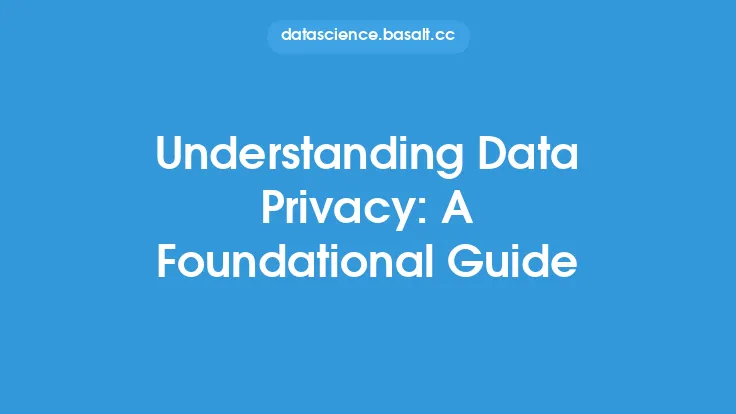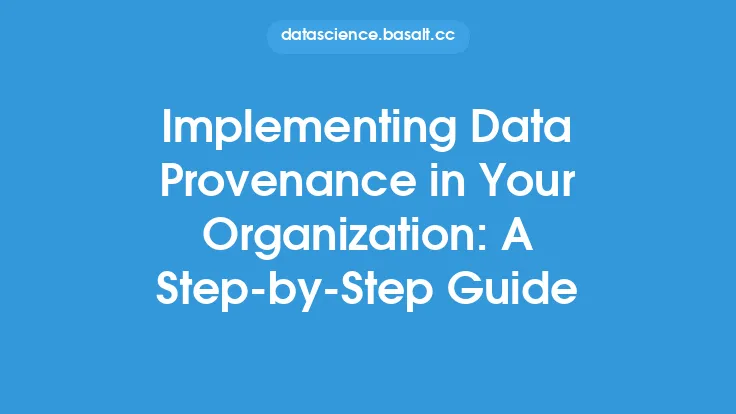Data compliance is a critical aspect of data governance that ensures organizations handle sensitive information in accordance with relevant laws, regulations, and standards. It involves implementing policies, procedures, and controls to protect personal data, prevent unauthorized access, and maintain data integrity. In today's digital landscape, data compliance is no longer a luxury, but a necessity for organizations to avoid reputational damage, financial penalties, and legal consequences.
Introduction to Data Compliance Concepts
Data compliance encompasses a broad range of concepts, including data protection, data privacy, and data security. Data protection refers to the measures taken to prevent unauthorized access, use, disclosure, modification, or destruction of personal data. Data privacy, on the other hand, focuses on the rights of individuals to control their personal information and ensure it is handled in a way that respects their autonomy and dignity. Data security involves the implementation of technical and organizational measures to protect data against unauthorized access, use, disclosure, modification, or destruction.
Key Data Compliance Principles
There are several key principles that underpin data compliance, including transparency, accountability, and data minimization. Transparency requires organizations to be open and honest about their data handling practices, including what data they collect, how they use it, and with whom they share it. Accountability involves assigning responsibility for data compliance to specific individuals or teams within the organization. Data minimization requires organizations to collect and process only the minimum amount of personal data necessary to achieve their legitimate purposes.
Data Compliance Standards and Regulations
There are numerous data compliance standards and regulations that organizations must adhere to, depending on their industry, location, and type of data they handle. Some of the most notable regulations include the General Data Protection Regulation (GDPR) in the European Union, the California Consumer Privacy Act (CCPA) in the United States, and the Payment Card Industry Data Security Standard (PCI DSS) for organizations that handle payment card information. These regulations often require organizations to implement specific controls, such as data encryption, access controls, and incident response plans.
Data Compliance Controls and Measures
To ensure data compliance, organizations must implement a range of controls and measures, including technical, administrative, and physical controls. Technical controls include firewalls, intrusion detection systems, and encryption technologies. Administrative controls involve policies, procedures, and training programs that govern data handling practices. Physical controls include measures to protect physical data storage devices, such as servers and laptops, from unauthorized access or damage.
Data Compliance and Risk Management
Data compliance is closely tied to risk management, as organizations must identify and mitigate potential risks to personal data. This involves conducting regular risk assessments, implementing risk mitigation strategies, and monitoring data handling practices to ensure they are aligned with regulatory requirements. Organizations must also have incident response plans in place to respond quickly and effectively in the event of a data breach or other security incident.
Data Compliance and Technology
Technology plays a critical role in data compliance, as organizations rely on various tools and systems to collect, store, and process personal data. Some of the key technologies used in data compliance include data loss prevention (DLP) systems, encryption technologies, and identity and access management (IAM) systems. These technologies help organizations to detect and prevent unauthorized data access, use, or disclosure, and ensure that only authorized individuals have access to sensitive data.
Data Compliance and Organizational Culture
Data compliance is not just a technical issue, but also a cultural one. Organizations must foster a culture of data compliance, where employees understand the importance of protecting personal data and are empowered to make decisions that align with regulatory requirements. This involves providing regular training and awareness programs, as well as encouraging a culture of transparency and accountability. By prioritizing data compliance and making it a core part of their organizational culture, organizations can build trust with their customers, employees, and stakeholders, and maintain a competitive advantage in today's digital landscape.
Conclusion
In conclusion, data compliance is a complex and multifaceted issue that requires organizations to implement a range of policies, procedures, and controls to protect personal data. By understanding the key principles, standards, and regulations that underpin data compliance, organizations can ensure they are handling sensitive information in a way that respects individual rights and maintains data integrity. As technology continues to evolve and data compliance regulations become increasingly stringent, organizations must prioritize data compliance and make it a core part of their organizational culture to avoid reputational damage, financial penalties, and legal consequences.





